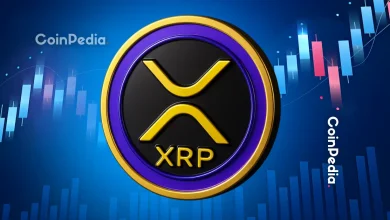
How many crypto-hedging strategies have you tried? If your answer is one or less, odds are you’re not a professional trader. Which is fine: most crypto traders aren’t, and yet they still manage to carve a living out of trading digital assets. However due to the complexity of most hedging solutions, this risk reduction and diversification strategy is generally left to the pros. But it doesn’t have to be that way because hedging doesn’t have to be complex thanks to the availability of crypto indexes.
Hedging Is Usually Hard
Hedging is a strategy used to minimize or offset the risk of adverse price movements in an asset. Crypto traders will often hedge by taking a position in a related asset that is likely to move in the opposite direction of the primary investment. When properly executed, this can reduce exposure to market volatility and potential losses while still allowing the upside to participating in the primary market.
This may sound like trying to have your cake and eat it, but hedging is more about trying to limit downside risk rather than winning both ways. It means that if a trader’s thesis is invalidated, they can still make back most of their money, leaving them enough capital with which to live and fight another day.
While the concept of hedging is relatively simple to grasp, its execution is more complex. It often involves using options contracts that give a trader the right to buy (call) or sell (put) an asset such as BTC at a specified price before a certain date. This provides an effective way of hedging against price movements without needing to directly sell the underlying asset.
That’s fine for pros who stare at four screens all day and are deeply wired to the ebb and flow of the crypto market. But for everyone else, it’s a non-starter. There needs to be a simpler way of reducing and diversifying risk. Crypto indexes – a basket of assets that can be traded as if they were a single token – are easy for anyone with a modicum of onchain trading experience to access. But are they a viable hedging solution?
Crypto Indexes as a Hedging Solution
Crypto indexes comprise a group of related assets which could be from a particular crypto sector or from an entirely unrelated sector such as precious metals or AI. DefiLlama lists dozens of crypto index protocols, many of which offer exposure to DeFi assets or to leveraged ETH and BTC tokens. Then there’s Truflation, which recently launched a dedicated Hedge Index comprising a weighting of alternative investments, from oil to BTC.
As a crypto-minimized index (Truflation’s Hedge Index contains just 10% BTC), this offers an alternative investment to crypto as well as an alternative to traditional USD-based investments. But how can such indexes be used as part of an effective hedging strategy? It works like this: by spreading investments across different assets, including cryptocurrencies, traditional assets such as stocks or bonds, and different tokens with varying risk profiles, traders can reduce the risk of loss from any single asset’s price drop.
Let’s say you’ve bought an index such as DPI, which contains four DeFi tokens: UNI, MKR, AAVE, and LIDO. If one of these tokens suffers a sudden drop due to a particular news event, be it a hack or negative press, the downside is minimized due to it forming just a small part of the overall index. While this limits the downside compared to holding a similar value of just one of these tokens, it doesn’t hedge against broader crypto market drawdowns. In such situations, an index such as Truflation’s would likely prove more resilient.
Do Uncorrelated Crypto Assets Exist?
15 years into its existence, crypto remains a highly volatile industry that can be easily spooked. The slightest negative news, such as a regulatory clampdown – or a positive event, such as a US inflation cut – can move the market. As a result, it’s difficult to effectively hedge by relying solely on trading baskets of crypto assets. If AI tokens drop 20% in a week, for instance, likely, memecoins will also be suffering.
The solution for traders seeking to reduce risk, therefore, is to seek exposure to non-crypto assets where possible. Tokenized RWAs representing assets such as metals, commodities, fine art, and stocks are one option. On the one hand, they’re unlikely to produce the sort of adrenaline-fueled gains that crypto is capable of on a good week. But on the other hand, they’re less volatile and, thanks to the emergence of crypto indexes, easier to trade.
If you’d like to diversify risk but don’t have the time or galaxy brain to master options trading, take a closer look at crypto indexes. They’re easy to trade and provide a gateway to a world of crypto sectors and alternative assets.
Trust with CoinPedia:
CoinPedia has been delivering accurate and timely cryptocurrency and blockchain updates since 2017. All content is created by our expert panel of analysts and journalists, following strict Editorial Guidelines based on E-E-A-T (Experience, Expertise, Authoritativeness, Trustworthiness). Every article is fact-checked against reputable sources to ensure accuracy, transparency, and reliability. Our review policy guarantees unbiased evaluations when recommending exchanges, platforms, or tools. We strive to provide timely updates about everything crypto & blockchain, right from startups to industry majors.
Investment Disclaimer:
All opinions and insights shared represent the author's own views on current market conditions. Please do your own research before making investment decisions. Neither the writer nor the publication assumes responsibility for your financial choices.
Sponsored and Advertisements:
Sponsored content and affiliate links may appear on our site. Advertisements are marked clearly, and our editorial content remains entirely independent from our ad partners.








